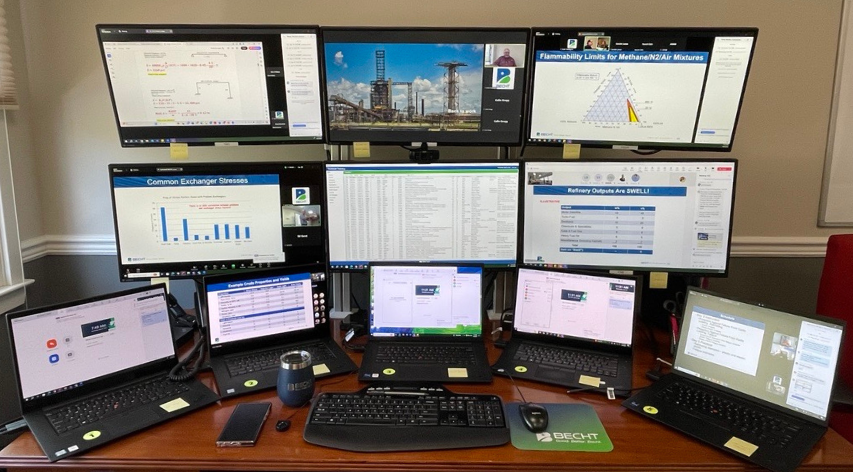Transforming Corporate Standards – Part 2: Integrated Overlays

“It’s the least terrible way we know how to do this – so we call it best practice.”
The use of overlays in corporate standards is a widely adopted best practice, and for good reason. By leveraging existing standards to provide the foundational requirements and best practices, organizations can focus their efforts on adding applicable site-specific overlay requirements necessary to customize the standard to address unique needs, risks, and preferences of the site or organization. This approach significantly reduces the time and effort required to develop and maintain standards. There’s just one problem: legacy overlay methods remain cumbersome and difficult to use in practice.
In this article, we introduce a new and more effective method: Integrated Overlays – a capability made possible through the BechtPracticesTM and its requirements-level content management approach, offering:
- Improved usability for engineers, contractors, and reviewers
- Reduced effort and cost to develop, maintain, and apply overlays
- Stronger alignment across sites, teams, and projects
- Data-informed governance for better content ownership and decision-making
Traditional Overlay Methods Explained
Historically, there have been two primary methods for creating overlays: Traditional Overlays and Derivative Work Overlays.
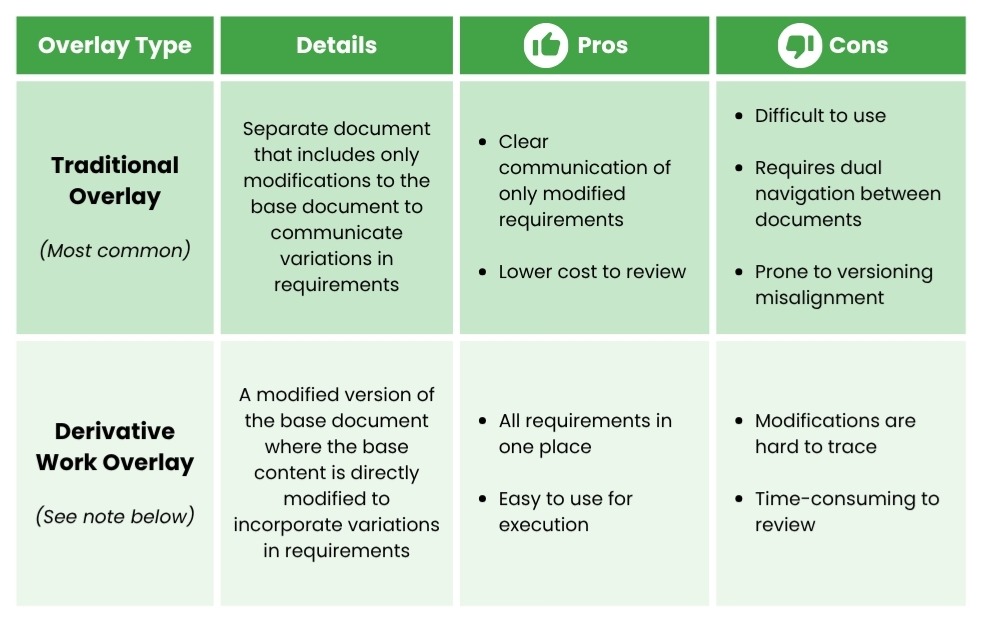
Table 1: Traditional Overlay Methods
Derivative Work Overlay is the newer method and requires approval by the content owner. Typically, the content owner will provide rules for the use of this method to avoid copyright infringement. For example, the industry organization Process Industry Practices (PIP) allows only its Active Members to develop Derivative Work Overlays and subsequently developed ADG013 – Guideline for Developing Practice Addenda to provide additional rules for applicability and use.
A Better Method: Integrated Overlays
“Innovation is taking two things that already exist and putting them together in a new way.” –Tom Freston, co-founder of MTV
As detailed in our series foundational blog, Transforming Corporate Standards – Part 1: Why Data, Not Documents, Is the New Best Practice, BechtPractices changed the game by improving the organizational foundation to manage standards at the requirement level in a Requirements Database Management System (RDMS).
Leveraging Becht’s RDMS, Integrated Overlays combine the strengths of traditional and derivative work methods while eliminating the inefficiencies of both. Content is managed at the requirement level, rather than the document level, which unlocks the ability to track and display overlay requirements dynamically within the base standard depending on the unique needs of the user.
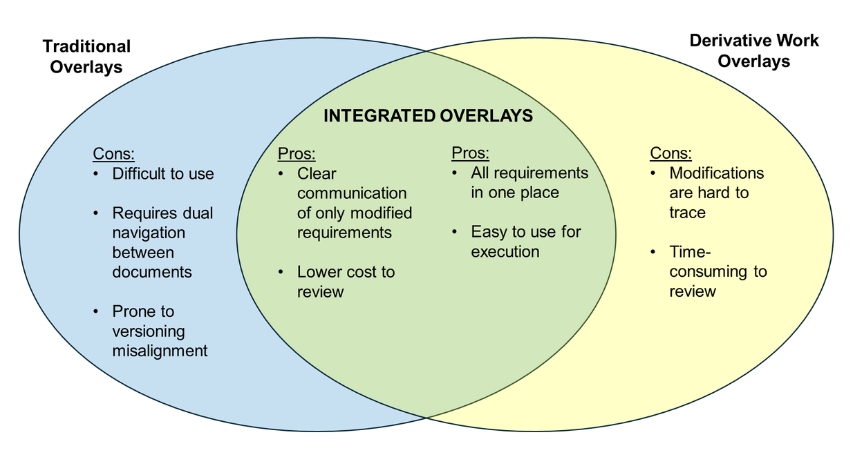
Figure 1: Use of Traditional Methods’ Pros as Foundation for Integrated Overlays
Key Features of Integrated Overlays
The primary features of Integrated Overlays to improve ease-of-use include:
- In-line presentation: Overlay content is directly embedded alongside the base standard, preserving context and enhancing usability.
- Customizable tagging: Each overlay requirement is tagged by modification type (e.g., New, Clarification, Substitution, Deletion, Decision, Modification), allowing users to configure displays for improved communication (for example, strikethrough requirements where there is a user overlay requirement) or filter by overlay requirement type.
- Multiple view modes: Users can toggle between various views for specific use cases.
Multiple View Mode Options
The four view modes currently available for selection within the BechtPractices platform include:
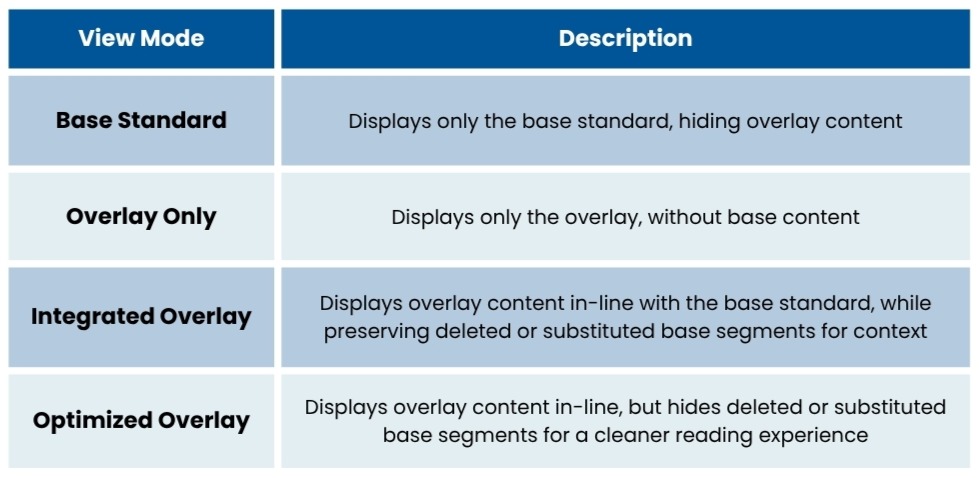
Table 2: View Modes for User Selection
These toggled view modes are made available for self-publishing through a selectable drop-down list – allowing the user to dynamically filter between views before publishing.
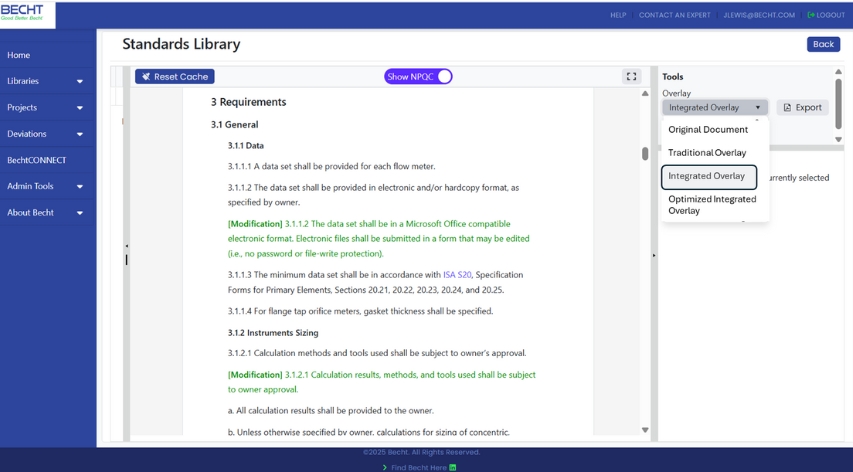
Figure 2: Toggled View Selection for Overlay Display
This flexibility allows publishing and collaboration tailored to engineering execution, internal reviews, or client-facing communication before exporting to a PDF copy for distribution or formal project information documentation.
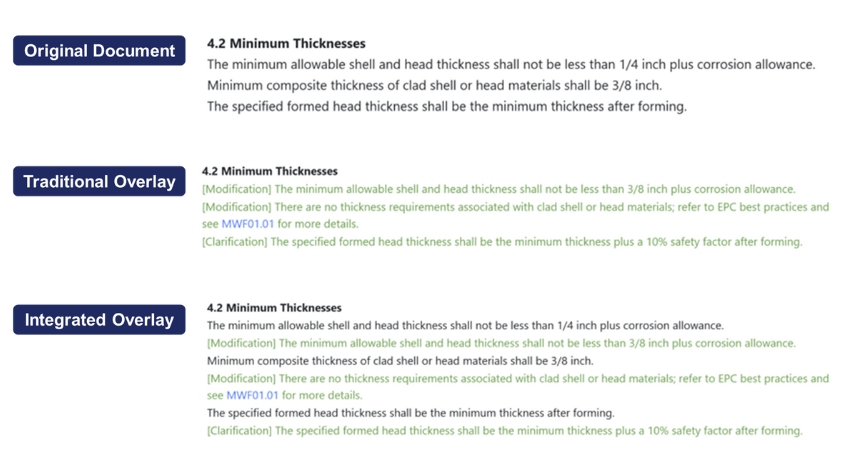
Figure 3: Example of Toggled View Display
Value-Add Insights for Content Owners
While Integrated Overlays were initially designed to simplify use for engineers, they provide even more strategic value to standards content owners.
By managing overlays as structured data, organizations can generate data-driven insight reports on how base specifications are being used and where they are frequently customized. This drives continuous improvement and ensures alignment with real-world needs. See example insight report data in Table 3, below.
With these data-driven insights, content owners no longer rely on anecdotal feedback – they can take action with confidence.
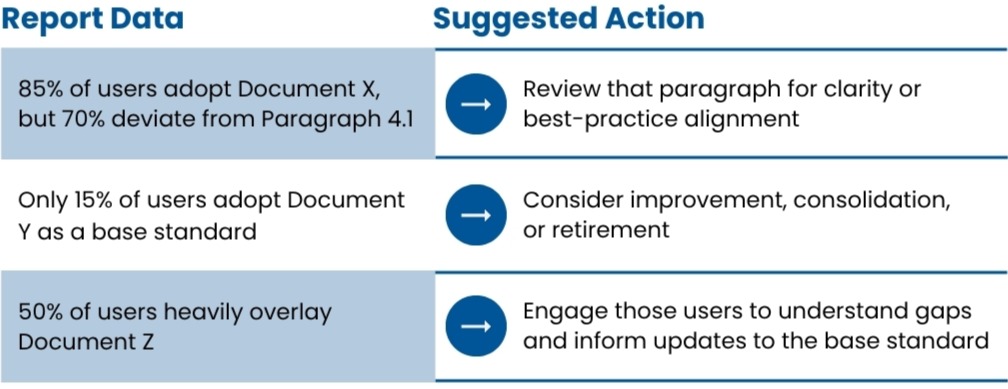
Table 3: Example Data-Driven Insight Report
Value-Add Utilization for Content Owners
When organizations develop their corporate standards, they face an initial decision for each topic: create a new specification from scratch or adopt an existing specification with a tailored overlay. Traditionally, if a subject matter expert (SME) anticipated that extensive modifications would be needed to adapt a base specification, they often chose to start from scratch – primarily due to the limitations and complexity of traditional overlay methods.
However, with the improved usability of BechtPractices’ Integrated Overlay, SMEs are increasingly opting to build upon existing standards rather than reinventing the wheel. This shift enables organizations to capitalize on the strengths of established documents while still meeting their unique operational needs.
By leveraging existing specifications through overlays instead of developing entirely new documents, organizations can realize significant short- and long-term benefits, including:
Reduced costs
- Lower development effort – Less time and fewer resources needed to generate content
- Simplified maintenance – Updates can be applied to overlays without reauthoring entire documents
- Streamlined review and usage – Easier for users to navigate and apply requirements
Improved knowledge transfer
- Industry knowledge-sharing – Gain insights from widespread adoption and feedback on existing specifications
- Broader alignment – Encourage reuse of common base documents across teams and regions
- This is especially valuable for global organizations when paired with advanced filtering, as discussed in our foundational article and to be explored in future posts
Reduced risk
- Alignment with consensus best practices – Leverages well-vetted industry standards
- Data-driven improvement – Supported by usage analytics and benchmarking against peer organizations
As more organizations adopt and build upon existing specifications, content owners, such as industry associations or internal governance bodies, benefit as well. They can:
- Deliver greater value to users and members
- Increase the relevance and impact of their published standards
- Safeguard subscription models and membership engagement through demonstrated utility and adoption
Conclusion
Integrated Overlays mark a turning point in standards management: from static documents to dynamically displayed structured content integration. This capability empowers both engineers and standards owners to operate with more confidence, alignment, and efficiency.
When engineering teams can interact with overlays that are contextual, current, and customized, they spend less time interpreting and more time executing. And when content owners have insight into how their standards are actually used, continuous improvement and increased value-add becomes a reality.
Next Steps
BechtPractices is more than a platform. It’s a modern solution to better manage critical organizational data that helps engineers and managers work smarter and faster.
- Follow us on LinkedIn for upcoming blogs and platform updates.
- Watch the recording of our global webinar, which includes a detailed demo of BechtPractices in action.
- Request a live demo tailored to your organization’s needs by contacting Jeannie Lewis or Matt Hansen.
Let BechtPractices help you unlock better performance, improved compliance, and stronger project execution – starting with how you manage your standards.
Like what you just read? Join our email list for more expert insights and industry updates.

